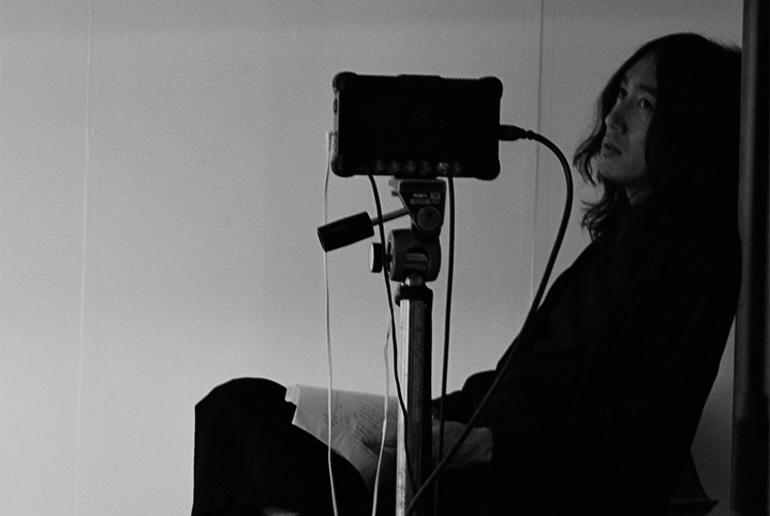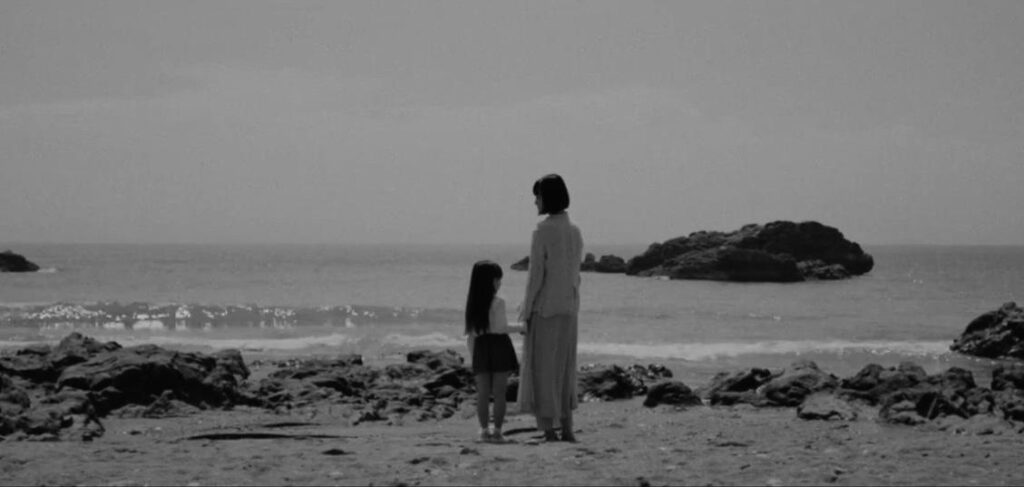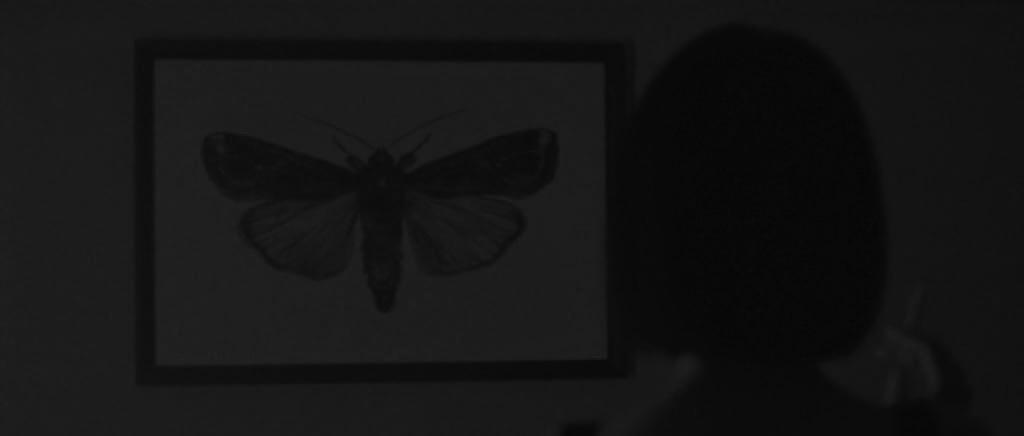
Keishi Kondo is a director and screenwriter born in 1985 in Aichi Prefecture, in Japan. After his studies of cinema he obtained a diploma but some projects and ideas never came to an end as they have never been fully completed. However, he released his first short film, See You Again in 2020. Two years later, thanks to donations (crowd founded) in 2022, Keishi Kondo made his very first feature film, New Religion.
« Not only was I the director, but also the producer, the editor, the production designer, the screenwriter, the public relations manager… I felt like NEW RELIGION was a film school. I had to learn all the departments. ”
The 2000s brought a breath of fresh air into Japanese horror movies (j-horror) with a particular style that still continues to impress. New religion is a bold film with a beautiful and particular photography portraying real suffering of life with original yet unusual visuals. It is a horror movie dealing with the loss of a child and the grief it creates. There is not much action as the film goes up slowly thus demonstrating a throbbing and unbearable grief. Consequently, it is a depressing and unfortunate horror film that begins in a nightmarish and oppressive way.

« To make this film, in terms of visuals, I think of Jonathan Glazer, Panos Cosmatos and Nicolas Winding Refn. Of course, as everyone said, David Lynch is the master. ”
The ideas of body horror and Panos Cosmatos‘s influence, the director of Black Rainbow or Mandy, are very present in the film. To put it simply, body horror is the manifestation of what should be left unknown inside the body, creating an absurd sight. In fatc, we can see some of it during the photoshoot in which we have the impression that Miyabi’s spine comes out of her body even though it is not the case or when a body appeares instantly in a macabre way. However, the director decided not to be graphic and rather implicit in term of portaying violence in his film. Then, the director chose to distill violence throughout the film and not simply in episodic shocking moments as we usually see in horror films. In this way, the director also plays with psychological violence to accompany the theme of mourning making it a continuous, slow and omnipresent violence. It, nevertheless, includes details that help the audience to imagine what is hidden and not said explicitly in the film. In films, violence is for pleasure, says Keishi Kondo during an interview at the occasion of the screening of New Religion at the International Film Festival in Warsaw.
As it is an independent project, there were not many materials and members for this film. However, small businesses joined Keishi Kondo’s project, « there was a lack of time to talk about the concept but I talked to the lighting director, Shigueru Nakaoka about my concept on red and blue and he brought back as much equipment as possible for us to shoot« . Thus, red has become the most present color in this film.
In this film, we follow Miyabi, played by Kaho Seto, who became a call girl after the tragic death of her daughter. She lives in an unhealthy and violent environment. Through her mourning Miyabi lives with her boyfriend, played by Ryuseigun Saionji, a jobless man without real convictions who tries to be a professional musician. In the film, he is not named; he is a passive character who does not understand his girlfriend’s mourning. Indeed, he is even angry because she became mad after she met a client.
Oka, played by Satoshi Oka himself, is the special customer whom she met and who only wants to take a picture of her; first he wants to shoot her spine then, over the appointments, he wants more and more of her body.
A: What were your inspirations for this movie? KK: The most important thing is that I met a person named Oka. His presence was mysterious, although it is difficult to describe. I began to write the first story of his presence. He is usually a director not an actor, so he cannot play. I needed an idea that could turn such weakness into strength. From there, I tried various ideas such as attaching a microphone to his throat, and I completed the character as he is now.
Oka is a flat, static and disturbing character who is neither good nor bad and who is little seen, through the movie, with a modified voice due to a microphone placed on his throat. This microphone is not only there for the originality of the character but also to help Satoshi feel comfortable playing this role. Furthermore, Oka changed the life of one of Miyabi’s colleague by taking a picture of her. The supernaturality of his photographs puts the audience in front of mental illness thus forcing it to aknowledge more than what can be beared emotionally.
A: Was it personal? KK: In part but not very much. I think my gaze was focused on Miyabi’s character, or on the poetic representation of our cursed society that the butterfly symbolizes.
In his film, Keishi Kondo plays on the dream in the dream which was already in a dream. We never know if Miyabi is in a dream, if she is dreamed of or if it is reality. This concept comes from the Butterfly Dream of the Chinese thinker Zhuang Zi, a poetic and meditative fable in which the philosopher dreams that he is a butterfly and wonders if he will actually be a butterfly who dreams of being human as he wakes up. He therefore suggests here that the boundary between reality and dream is porous and shady as no one can ever tell. Maybe the butterfly dreams of being a woman, but it’s a woman who has lost her child.
In one hand, the butterfly represents the soul. All the great civilizations, religions and spiritual traditions have always attributed great symbolism to butterflies. For some, seeing a butterfly foreshadows change, the passage of a cycle. On the other hand, it represents a guardian angel or the symbol of immortality. In Japan, the butterfly is seen as the symbol of spiritual transformation. The soul, in Latin America, represents the dead, while in Africa it is associated with witchcraft and malicious spirits. The short lifespan of the moth and its nocturnal appearances make it a symbol of the fragility of life and the inevitability of death. Each culture brings its own interpretation and each interpretation is evoked in New Religion.

« It is a symbol of the human soul in many countries. I liked this idea, the fundamentals of the human being. ”
Oka’s photography seems to bring Miyabi’s memories to life. The symbolism of butterfly is highly present through the movie. In some Native American legends, moths are seen as spiritual guides guiding the soul of the dead in order to find peace. Perhaps, here the butterfly guides Miyabi’s daughter to her. Each photo taken allows her daughter’s ghost to get nearer or, in any case, to be seen by her mother thus always in a way that refers to the last photography session with Oka. People on Oka’s Polaroids eventually disappear before reappearing in a grotesque, horrible and disturbing manner. Something unhuman gives life to butterflies whom from their cocoon dream of being human according to Oka.
Everything in New Religion is portrayed like a dream or a nightmare. Those supernatural landscapes of reverie conduct a sort of crazy atmosphere of discomfort filled with moments of terrible emotions hurting the audience. One may have the impression of viewing or imagining things that could happen following certain violent scenes. As a result, the question of what is real or not arises in one’s mind when watching the film. Fortunately, at the end of the film, one can get the right answers to their questions and matter… Or just about.

Laisser un commentaire